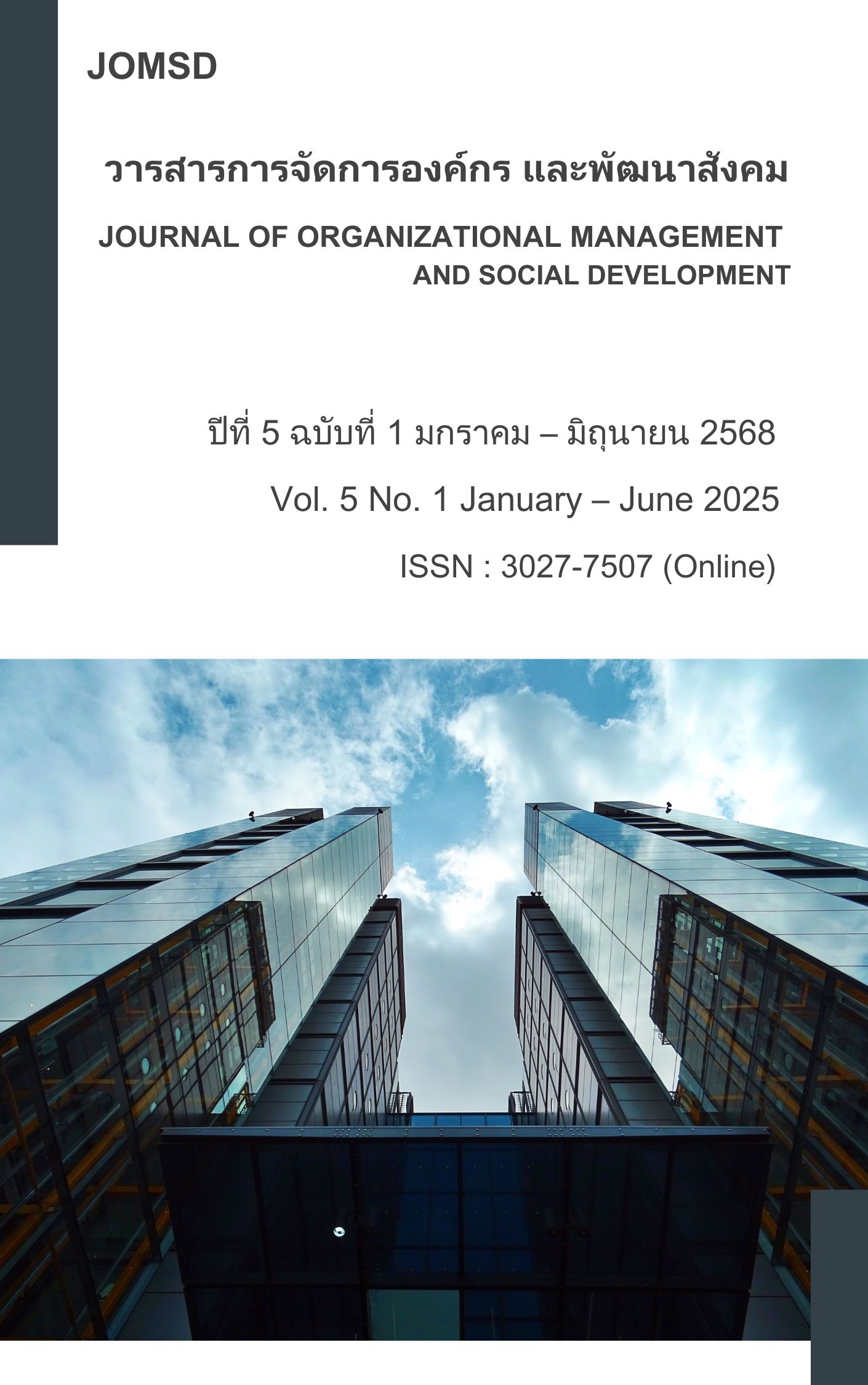The development of Marketing Strategies for Vocational education institutions in Nanning City, Guangxi Province, The People's Republic of China
Main Article Content
Abstract
This research article aims 1) to study the current situation, problems and needs in developing marketing strategies of vocational institutes in Nanning and 2) to develop marketing strategies for vocational institutions In Nanning. This study was a qualitative research using in-depth interviews with 18 people and focus group discussions with 6 people. The research instruments were semi-structured interviews and opinion interviews on marketing strategy development. Content and descriptive data analysis. The research results found that: 1) the current situation, problems and needs were as follows: (1) Products it is curriculum has many fields of study that meet the needs, experience training, and flexible curriculum. (2) Price it is worth the quality of the course. (3) Place using online and offline channels reach the target group. (4) Promotion using social media (5) People having knowledge teaching, marketing and research (6) Process it is various technologies are used for speed and (7) Physical it is modern infrastructure supports various teaching methods. 2) The results of the development of marketing strategies of vocational institutes found that: (1) Product strategies development of curricula that meet the needs (2) Pricing strategy it is reasonable price (3) Place strategy include online channels and off-site activities (4) Promotion strategy use social media and platforms to disseminate information (5) People strategy is develop skills and build relationships between students (6) Process strategy it is personnel development, platform, service and flexible teaching and (7) Physical environmental strategies are appropriate for the learner.
Article Details
References
กชกร โสไกร และสรชาติ รังคะภูติ. (2565). ปัจจัยส่วนประสมทางการตลาด (7P’s) ที่มีอิทธิพลต่อการตัดสินใจเข้าศึกษาต่อในระดับอุดมศึกษา ระบบการศึกษาทางไกลในจังหวัดชลบุรี. วารสารวิจัยวิทยาการจัดการ มหาวิทยาลัยราชภัฏสุรินทร์, 6(3), 43-56.
นงลักษณ์ อัจนปัญญา. (2563). เมื่อไวรัสโควิด-19 กำลังพลิกโฉมระบบการศึกษาโลก. สืบค้นจาก https://www.eef.or.th/30577/.
นวลอนงค์ อุชุภาพ. (2562). กลยุทธ์การตลาดเพื่อการบริหารอาชีวศึกษาในยุคไทยแลนด์ 4.0. วารสารศึกษาศาสตร์ มหาวิทยาลัยสงขลานครินทร์ วิทยาเขตปัตตานี, 30(1), 1-11.
ภาวิณีย์ มาตแม้น. (2557). กลยุทธ์การตลาดเพื่อพัฒนาภาพลักษณ์ของวิทยาลัยอาชีวศึกษาเอกชนในประเทศไทย. (ปรัชญาดุษฎีบัณฑิต, มหาวิทยาลัยสยาม).
ร่มฉัตร จันทรานุกูล. (2568). New China Insights: สินค้า Made in China กับ ข้อกังขาด้านคุณภาพ. สืบค้นจาก https://mgronline.com/china/detail/9680000034848.
สมศักดิ์ หงส์สุวรรณ และกรวีร์ ชัยอมรไพศาล. (2561). ปัจจัยส่วนประสมทางการตลาดที่มีผลต่อการตัดสินใจเลือกเรียน สถาบันสอนภาษาต่างประเทศ อัพเกรด อคาเดมี่ จังหวัดเชียงใหม่. วารสารมหาวิทยาลัยพายัพ, 28(1), 151-165.
สายพิณ ปัญญาคำ. (2562). กลยุทธ์การบริหารอาชีวศึกษาเอกชนในเครือเอกวรรณสู่ความเป็นเลิศ. (ศึกษาศาสตรดุษฎีบัณฑิต, มหาวิทยาลัยราชภัฎเชียงราย).
สุทธิพร จิตต์มิตรภาพ. (2556). การเปลี่ยนแปลงโลกของการเรียนรู้ในศตวรรษที่ 21 และการพัฒนาสู่ครูมืออาชีพ. สืบค้นจาก https://filesthaischool0.com/files/uppic/70100305/document/70100305_0_20150723-105248.pdf.
Al-Dmour, R., Al-Dmour, H., & Al-Dmour, A. (2024). The role of marketing mix and social media strategies in influencing international students' university choices in Jordan. Journal of International Students, 14(4), 642-663.
ASEAN. (2002). China Free Trade Area. Retrieved from https://investasean.asean.org/free-trade-areas/view/734/newsid/776/aseanchina-free-trade-area.html.
Juhaidi, A. (2024). Social media marketing of Islamic higher education institution in Indonesia: a marketing mix perspective. Cogent Business & Management, 11(1), 2374864.
Kotler. (2010). Principles of Marketing. (13th ed.). London: Pearson Education.
Ministry of Education of the People's Republic of China. (2019). Education Minister: Overview of landmark achievements in education. Retrieved from http://en.moe.gov.cn/features/70YearsofProgress/Remarks/201909/t20190929_401662.html.
Napitupulu, B. B. J., Kumoro, D. F. C., Asbari, M., & Nadeak, M. (2023). The Effect of Marketing Mix on Student Decision to Choose a Private University. Journal of Information Systems and Management, 2(3), 110-119.
National Education Development Statistics of China. (2021). Number of Schools Educational Personnel and Full-time Teachers by Type and Level. Retrieved from http://en.moe.gov.cn/documents/statistics/2021/national/202301/t20230104_1038068.html.
Saaty, T. L. (1990). How to make a decision: the analytic hierarchy process. European journal of operational research, 48(1), 9-26.

